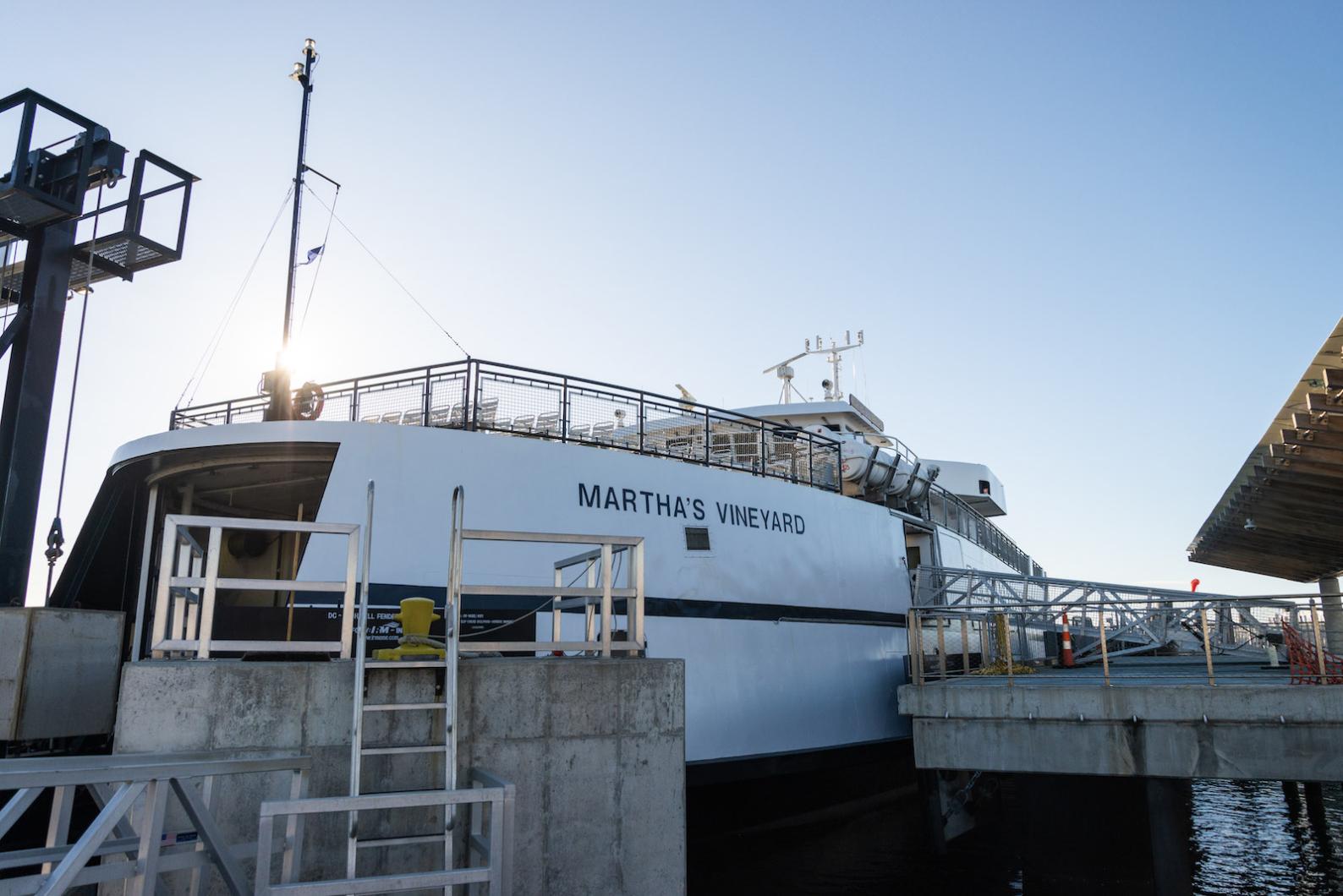The Steamship Authority’s capital budget for 2024, approved Tuesday by the boat line board of governors, includes funds to begin developing a diesel-electric hybrid ferry.
The budget allocates nearly $400,000 in 2024 for the hybrid ferry, which many residents and officials have been pushing for in recent years to reduce the ferry line’s emissions in the face of climate change.
“There’s $375,000 allocated for this year, and then another $375,000 for next year, for design of a new vessel,” treasurer Mark Rozum told the board and port council at their joint meeting in Falmouth.
Steamship Authority chief operating officer Mark Higgins said the money will pay for design and engineering work over the next two years by Elliott Bay Design Group, which has expertise in electric and hybrid propulsion.
The Seattle-based naval architecture and marine engineering company works with ferry lines across the country and previously designed the SSA vessel Woods Hole, which went into service in 2016.
Elliot Bay Design Group also took part in a study two years ago to determine the remaining useful life of the SSA’s current fleet so the boat line could plan its replacement
The new hybrid ferry — and others to follow — likely will be modeled on the Woods Hole, Mr. Higgins said.
“We’re looking at standardization of vessels,” he said. “We would have a standard hull form going forward.”
Mr. Higgins, who joined the Steamship Authority as its first C.O.O. last year after working for Maine State Ferry Service, said reducing greenhouse gas emissions is a priority for him.
“The biggest thing is the vessels. We burn 3.5 million gallons of diesel a year,” Mr. Higgins said.
Less than 75,000 gallons are used to fuel the SSA’s diesel buses and maintenance vehicles, he said, with all the rest powering ferry engines.
“That’s by far the biggest emitter from the Steamship Authority,” he said. “To me, that has to be a priority of what we look at going forward.”
The $750,000 commitment over the next two years is coming out of the boat line’s replacement fund. A new ferry could cost about $65 million and hybridization is expected to have a price tag of about $13 million, according to Steamship documents.
Bond funding will be necessary once the new ferry goes into production in 2027, Mr. Rozum said.
The Steamship Authority’s borrowing limit was raised by the state legislature last year to $150 million, of which more than half remains available, according to the capital budget approved Tuesday.
Other projects in the $105 million capital spending plan for this year include $2.2 million to purchase two electric buses, $1.5 million for network infrastructure and $775,000 to add side loading to the ferry Woods Hole.
Almost $11 million is earmarked for the first construction phase of the permanent ticket office in Woods Hole, where work is expected to begin this fall.
The $48 million cost of the project covers not only the ticket building itself but a separate shed for its utilities, as well as site work around the structure including bus lanes, solar canopies, landscaping and a geothermal heating and cooling system, Mr. Higgins said.
Among other business Tuesday, the board of governors and port council approved the Steamship Authority’s first strategic plan, with 17 initiatives assigned to department heads including Mr. Higgins, Mr. Rozum, human resources director Janice Kennefick and information technology director Stephen Colman.
Among the plan’s goals are to create a formal plan for vessel replacement that includes hybrid propulsion, increase staff participation in decision-making, seek more grant funding, improve communication with customers and develop a new system for booking vehicle reservations.
The board also agreed to a $245,000 contract with information technology company Gibbous LLC to provide management consulting for the Steamship Authority’s IT system.
The SSA also needs to add five positions to its IT department, Gibbous consultant Thomas Innis told the board: a project manager, a database administrator, a business analyst, a user experience designer and a quality assurance staffer.
“Quality assurance people are amazing at finding everything that’s wrong, so that you can fix it before it gets deployed,” said Mr. Innis.
The Steamship Authority doesn’t need to hire all five positions at once, he said, but the need for them will increase within the year.
While costly, Mr. Innis’s recommendation is also timely, port council member John Cahill said.
“We’ve had probably two decades of having savings, because these are some of the things that we should have been doing all along. It’s like neglecting an old house,” he said.






Comments (1)
Comments
Comment policy »